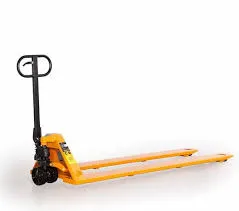


Wireless Remote Control for 12 Volt Winches Revolutionizing Winching Operations
The evolution of technology has continually transformed various industries, enhancing efficiency and safety. One of the significant advancements is in the field of winching operations, especially through the development of wireless remote controls for 12-volt winches. These innovative devices are redefining the way operators manage heavy lifting and pulling tasks, making them more convenient and reliable.
Understanding 12 Volt Winches
Before delving into the benefits of wireless remote control systems, it’s essential to understand what a 12-volt winch is. Typically used in automotive, marine, and industrial applications, a 12-volt winch operates on a DC electrical system, usually powered by a vehicle's battery. These winches are critical for towing, extracting, or lifting heavy loads, and their power and versatility make them a staple in various environments.
The Need for Wireless Control
Traditionally, winches were operated via wired controls, which could limit mobility and pose safety risks. The operator often had to remain close to the winch, making it difficult to monitor the load effectively while controlling the winch. This proximity not only exposed the operator to potential hazards but also restricted their ability to provide clear visual guidance during operations.
Wireless remote controls address these challenges by allowing operators to control the winch from a safe distance. Utilizing radio frequency (RF) technology, these remotes enable smooth and precise operation without the constraints of a physical connection to the winch. This advancement not only increases safety but also enhances operational efficiency.
Key Advantages of Wireless Remote Controls

1. Improved Safety Being able to operate the winch from a distance significantly reduces the risk of injury. The operator can maintain a safe distance from heavy loads, hazardous terrain, or potential entanglement with ropes.
2. Greater Control and Precision Wireless remotes often feature multiple buttons that allow for nuanced control over the winch's operation, including extending, retracting, and stopping the drum. This precision is crucial when handling delicate operations or managing heavy objects.
3. Enhanced Flexibility The ability to move freely around the worksite while operating the winch allows for better situational awareness. This flexibility enables the operator to position themselves optimally for visual cues or to communicate more effectively with team members.
4. Ease of Use Wireless remotes are typically designed for user-friendliness. Most remotes are lightweight, portable, and ergonomically designed for extended usage without causing fatigue. This ease of use is particularly beneficial in high-stress situations where quick reactions are necessary.
5. Versatile Applications Wireless remotes can be used across various platforms, from off-road vehicles to construction sites, making them invaluable in multiple industries. Whether it’s pulling vehicles from ditches, hoisting materials at a construction site, or assisting in marine operations, the versatility of the wireless remote significantly enhances the usability of 12-volt winches.
Conclusion
The integration of wireless remote control technology in 12-volt winches represents a significant step forward in enhancing safety and efficiency in winching operations. By eliminating the risks associated with wired controls, these devices empower operators to work more intelligently and safely. As industries continue to seek ways to optimize heavy lifting operations, the adoption of wireless technology in winches will undoubtedly play a crucial role in shaping the future of this field. For anyone in need of a reliable winching solution, upgrading to a wireless remote-controlled 12-volt winch may very well be the best decision to ensure safety and efficiency on the job.



